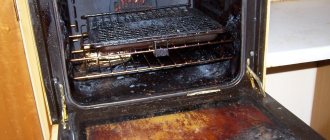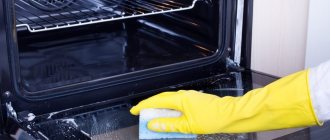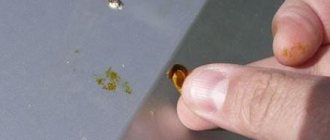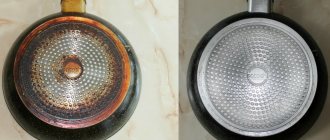Laminate is a practical and easy-to-clean floor covering that does not require special maintenance. But after repair or over time, stains of various origins may form on it. To clean the floor covering from various types of contaminants, you need to follow some rules. Laminate flooring should not be wetted with plenty of water, as this will ruin its structure and appearance. When washing, you need to minimize the amount of moisture and immediately wipe the surface dry. Do not use hard brushes when cleaning - this can damage the coating.
How to prevent fat deposits from spreading around your belly
Everything you need to know about the types of fats, where they are located and how to retain them.
It's no secret that too much body fat is unhealthy. You're probably focusing on how much you have, but another aspect to pay attention to is your fat distribution—or where you have it.
It turns out there are certain places where excess fat can be a problem. And there are other places where it might not be that important.
How to distinguish? Here's what you should know about fat distribution and what it can tell you about your health. Plus, here's how to achieve better balance.
You can tell a lot about your total body fat. As for where this fat tends to show up? This may be a little more complicated.
Most people tend to store fat either in their midsection or thighs. But your genes, gender, age and hormones can affect how much fat you have and where it goes.
What determines body fat?
- Your genes. A 2021 study estimates that nearly 50 percent of fat distribution can be determined by genetics. If most people in your family have a rounder belly or fuller thighs, there's a good chance you'll follow suit.
- What's your gender. Healthy body fat levels for men range from 6 to 24 percent, while for women they range from 14 to 31 percent, says the American Council on Exercise. “Men tend to store more fat in the abdominal area, while women tend to store more fat in the thighs and buttocks,” says Kate Ayoub, MD, PhD, assistant clinical professor emeritus at Albert Einstein College of Medicine.
- Your age. Older people tend to have higher levels of body fat due to factors such as slower metabolism and gradual loss of muscle tissue. And the excess fat is more likely to be visceral rather than subcutaneous.
- Your hormone levels. Weight and hormones are usually linked, especially in your 40s. This occurs due to the natural decline in hormone levels such as testosterone (in men) and estrogen (in women), explains Pamela Peek, M.D., fat tissue expert and author of Body for Life for Women.
Believe it or not, there are three of them. Not only does each have its own function. They are all located in different parts of your body.
Here are the types of fat broken down:
- Subcutaneous fat is located above the muscles, just under the skin. It can be poked or pinched, often around the buttocks, hips or thighs. This makes up about 90 percent of our fat reserves.
- Visceral fat is found deep inside the abdominal cavity. It surrounds vital organs such as the liver, intestines and heart. Unlike subcutaneous fat, it cannot be touched or felt. But it can pose serious health risks. (More on this later.)
- Brown fat is a special type of fat that helps the body burn extra calories to stay warm. Babies have a lot of brown fat, but adults also have small amounts, mostly in the shoulder and chest areas. A small study of five men found that spending time in cold temperatures—around 19°C (66°F) or lower—can activate it and speed up calorie burning.
Subcutaneous fat is mostly stored energy. A small amount may be more beneficial than you think.
It produces hormones such as leptin, which signal to the brain that you are full and don't need to eat anymore. It also produces adiponectin, an anti-inflammatory hormone that plays a role in maintaining healthy blood sugar levels.
In other words? Resist the urge to judge your wiggle. This could be a good thing.
As visceral fat accumulates around vital organs, it can end up in the liver. From there, it turns into cholesterol, which enters the bloodstream and clogs arteries.
Visceral fat is thought to signal the release of inflammatory chemicals and contribute to the development of insulin resistance.
Both of these processes can harm the body.
Excess visceral fat may increase your risk of:
While it's difficult to determine how much visceral fat you have, having too much is surprisingly common. The results show that 44 percent of women and 42 percent of men have excess visceral fat. The most accurate way to measure the amount in your body is with an MRI or CT scan.
Quickly Measure Visceral Fat at Home If you are a woman with a waist circumference greater than 35 inches or a man with a waist circumference greater than 40 inches, you likely have too much visceral fat.
You're more likely to have too much visceral fat if your body mass index (BMI) falls into the overweight (25 to 29.9) or obese (30 or higher) category.
But you shouldn't rely on BMI alone to determine whether your body fat is in a healthy range, Ayoub says.
Research shows that 22 percent of normal-weight men and 8 percent of women actually have too much visceral fat. (And risk associated health problems.)
The opposite may also be true. About 22 percent of obese men and 10 percent of obese women have visceral fat levels within the normal range.
Conclusion? It's just as important to pay attention to the amount of fat around your belly as the number on the scale.
Your body doesn't care where fat is typically located. Certain lifestyle factors also play a role.
Here are three common habits that cause visceral fat to accumulate:
- Overeating junk food. "These foods have the ability to be quickly absorbed into the bloodstream, causing a surge in insulin, which acts as a body fat hormone," says holistic weight loss specialist Louise Petre, MD. Too much saturated fat also seems to contribute to the accumulation of visceral fat.
- Passive lifestyle. Research shows that the more time you spend sitting, the larger your waist circumference will be. So when Netflix says, “Are you still watching?” use this as a reminder to take a walk.
- How to let stress get out of control. Over time, chronic stress causes the body to accumulate excess visceral fat. “The greatest concentration of receptors for the stress hormone cortisol can be found deep in visceral fat tissue,” explains Peake.
You may not have complete control over where your body chooses to store fat. However, that doesn't mean you can't take steps to prevent excess fat from ending up in potentially dangerous places, like deep in your belly.
6 Tips for Healthy Fat Distribution
- Choose complex carbohydrates and protein.
- Eat healthy fats.
- Do exercises for 30 minutes a day and increase their intensity.
- Keep stress under control.
- Get six to seven hours of sleep every night.
- Limit your alcohol intake.
- Choose complex carbohydrates and proteins instead of sweet ones. They are digested more slowly, so insulin levels remain stable, rather than causing the body to store excess belly fat, says Petre.
- Choose healthier fats. Polyunsaturated fats such as walnuts, salmon and flax seeds are particularly good choices, especially if you replace them with saturated fats. The results show that polyunsaturated fats promote the growth of calorie-burning muscle tissue, while saturated fats promote the storage of excess fat.
- Do the exercises - and try to increase the intensity. Get the most bang for your buck. “Strength training helps increase muscle mass, which in turn reduces body fat,” explains Petre. Research shows that high-intensity intervals (such as alternating sprints with walking) are more effective at reducing visceral fat than moderate aerobic exercise.
- Try to keep stress under control. Reducing tension keeps your system from being constantly flooded with cortisol. This, in turn, can help prevent excess fat from getting into your visceral tissues, Pick says.
- Get enough sleep. In one six-year study, participants who typically slept five hours showed a 32 percent increase in visceral fat. For those who exercised for six to seven hours, visceral fat increased by only 13 percent.
- Limit your drinking. Filling your body with excessive amounts of alcohol in one sitting means that more calories can be stored as visceral fat. Heavy drinkers tend to have higher levels of belly fat, so stick to no more than one drink per day (for women) or two a day (for men). And above all, avoid binge drinking. This is defined as four or more drinks in two hours.
Don't try to do all these steps at once if it seems overwhelming. Enjoying baby steps and creating lifelong habits is more effective and healthier.
If anything, remember this key tip: watch your portions in general. When you eat too much of any food, even healthy foods, the extra calories your body doesn't need are stored as fat.
Marygrace Taylor is a health and wellness writer whose work has appeared in Parade, Prevention, Redbook, Glamour, Women's Health and others. Visit her at marygracetaylor.com. .
How to clean laminate flooring
Laminate is a wood-based finishing material, so it is sensitive to moisture and requires careful care. To make the laminated floors in your rooms shine, you should know how to properly clean the flooring after renovation, remove stains from household dirt, how to properly wash a laminate floor and care for its surface.
Improper care leads to the fact that the floor covering loses its attractive appearance, becomes dull, with stains remaining due to improper removal of dirt. Laminate panels may swell due to moisture during cleaning.
How long should you wash your hands? Recommendations and tips
Hand washing has always been an important defense against bacteria and viruses that can be transmitted to us through objects we touch.
Now, during the current COVID-19 pandemic, it is even more important to wash your hands regularly.
The SARS-CoV-2 virus, which causes coronavirus disease (COVID-19), can live on various surfaces for hours or even days (depending on the material).
Proper hand washing can protect you from inhaling the virus when you touch a contaminated surface and then touch your face.
The Centers for Disease Control and Prevention (CDC) recommends washing your hands for at least 20 seconds. If you're having trouble tracking, try singing the entire "Happy Birthday" song twice before rinsing.
A rushed process can lead to cross-contamination and increased morbidity.
A 2021 report from the United States Department of Agriculture (USDA) found that up to 97 percent of us are not washing our hands properly.
When and for how long to wash your hands can determine how often you and your family get sick, especially while the novel coronavirus is active.
In one workplace study, employees who received training in handwashing and hand hygiene practices took 20 percent fewer sick days due to improved hygiene.
To protect yourself and others during the COVID-19 pandemic, the CDC recommends taking extra precautions and washing your hands in the following situations:
- after being in a public place
- after touching a surface that may have been touched frequently by others (doorknobs, tables, pens, shopping carts, etc.)
- before touching your face (particularly your eyes, nose, and mouth)
In general, the CDC recommends regular hand washing in the following situations:
- before, during and after cooking, especially when handling chicken, beef, pork, eggs, fish or seafood
- after changing a baby's diaper or helping with toilet training
- after visiting the toilet
- after caring for the pet, including feeding, walking and petting
- after sneezing, blowing your nose or coughing
- before and after first aid, including treating your own cut or wound
- before and after meals
- after waste processing, recycling and garbage removal
It is also wise to wash your hands and change clothes after you return home from public places, and wash your hands frequently during the workday.
According to the CDC, the average office worker's desk is covered in more germs than a bathroom toilet seat.
You should also wash the dishes after shaking hands at a social or work event, since hand-to-hand contact is a common way to spread germs.
Here's how to effectively wash your hands to stop the spread of viruses and other germs:
- Start by turning on the water and wet your hands. Many people use soap as a first step, but wetting our hands first will create a better lather for washing.
- Apply liquid, bar or powder soap to wet hands.
- Lather the soap up to your wrists, between your fingers, and on your nails and fingertips.
- Rub your hands together vigorously for at least 20 seconds.
- Rinse your hands well.
- Dry your hands thoroughly with a clean, dry cloth towel.
Do you take longer to wash if you cook?
When preparing food, you need to be aware of bacteria. Wash your hands often, about once every couple of minutes. However, this does not mean that you need to increase the amount of time you spend washing your hands.
If you follow the correct steps, 20 seconds should be enough time to thoroughly clean your hands of potentially dangerous pathogens.
Food safety experts point out that if you don't have a timer handy to count down 20 seconds, humming the "Happy Birthday" song to yourself twice in a row is about the right amount of time.
Since heat kills bacteria, it is safe to assume that warm or hot water is better for hand washing. But, according to experts, there is no noticeable difference between them.
The temperature to which water must be heated to kill pathogens can burn your skin.
In fact, research has shown that there is no clear evidence that washing your hands in warm water is better for getting rid of germs.
So, run the tap at whatever temperature you want, remembering that cold tap water saves energy and water consumption.
When it comes to which soap is best to use, the answer may surprise you. So-called "antibacterial" soap does not necessarily kill more germs than regular soap.
In fact, soaps containing antibacterial ingredients may simply breed stronger, more resistant forms of bacteria.
To wash your hands, use any liquid, powder, or bar soap you have. If you wash your hands as often as you should, you may want to look for a soap that is moisturizing or labeled as "gentle" for your skin to keep your hands from getting dry.
Liquid soap can be more convenient if you store it on counters and in sinks.
If you run out of soap at home or find yourself in a public restroom without soap, you should still wash your hands.
Follow the normal hand washing procedure described above, then dry your hands well.
In a 2011 study that compared hand washing with and without soap, researchers concluded that while soap is highly preferable (reducing E. coli bacteria on hands to less than 8 percent), washing without soap is still beneficial ( reduction of E.coli up to 23 percent on hands).
Can I use hand sanitizer instead of soap?
Hand sanitizers containing more than 60 percent alcohol are effective in removing some harmful bacteria from your skin. However, they do not help dissolve dirt and oil from your hands, and they are not as effective at killing bacteria as proper hand washing.
Whether you're stranded in a doctor's office, a crowded train station, or stuck at your desk, it's good to have hand sanitizer on hand to get rid of any possible contaminants.
But if you're cooking, handling diapers, caring for a sick loved one, or using the bathroom, hand washing is definitely preferable.
Proper hand washing will quickly become a habit. By rubbing your hands together for 20 to 30 seconds, the soap will work its magic and get rid of any possible contaminating bacteria.
Take extra care to wash your hands during the COVID-19 pandemic, flu season, and when caring for people who are immunocompromised.
Hand washing is a simple and effective way to stop the spread of germs, and the best part is, it's completely under your control.
.
How to remove polyurethane foam from laminate flooring
The widespread use of polyurethane foam in repair work is partly explained by its excellent adhesion (really tightly) to any surface. But a strong increase in the volume of the foam mass leads to the fact that it often adheres to completely different surfaces with which it is necessary. Drops of polyurethane foam can get on the laminate flooring and removing it from it will be very problematic. It is no coincidence that one of the frequently asked questions on the Internet is how to remove hardened polyurethane foam from laminate flooring. This is really a problem, since the foam hardens quickly, and if the repairs are carried out by workers, then, as a rule, they do not care much about cleanliness.
Before listing ways to clean polyurethane foam from laminate flooring, it should be recalled that it is much easier to prevent it from getting on the surface. Why, before foaming, you should cover the floor with newspapers or polyethylene. If the foam mass does end up on the floor, you will have to quickly choose between two options:
- wipe it off immediately without waiting for it to harden;
- Allow the mixture to harden and then begin cleaning.
Some people believe that it is better not to touch the soft foam mass, as it is easier to remove when it hardens. But in reality this is not entirely true. If you wipe off uncured polyurethane foam, it will not have time to adhere to the laminate, which means that its removal will not damage the surface. You just need to know how to wipe off the polyurethane foam and how to wipe it off, so as not to stain the floor even more.
The sequence of actions is as follows:
- first, the soft mass is carefully rolled with a rubber roller in the direction from the edges to the center; if you roll it the other way around, the size of the contamination will only increase;
- the resulting lump is carefully removed with a spatula; you should not pick it up in your hands, so as not to rack your brains about how to wash the mounting foam from your hands;
- Remaining foam can be easily wiped off with a rag, which should preferably be moistened with foam cleaner or acetone.
Foam cleaner and acetone are very aggressive compounds. Therefore, their presence on the surface of the laminate should be minimal in time.
To be fair, it must be said that there is nothing difficult in removing already dried foam. The work of cleaning the laminate, of course, should be done very carefully in the following order:
- First you need to cut off the frozen drop of foam “at the root”. It is more convenient to do this with a cutter or spatula, setting the blade to its maximum length and bringing it as close to the floor as possible.
- Clean off any remaining foam with a special foam remover.
- Polish the surface with a rag.
The result of cleaning polyurethane foam using any of the above methods depends on how carefully the work is done.
We remove specific stains
Often, various substances get on the floor, leaving stains. Some spots need to be dealt with with special means, and they should be used exclusively in the area of the resulting defect. To remove stains from laminate flooring, determine the source of contamination, and then follow these tips:
Especially drops of glue or paint should be highlighted. It seems impossible to remove them from the surface, however, there are two products that can cope with such contaminants. Experts recommend using alcohol or acetone. You need to apply the substance to the stain, and after 3-4 minutes, wipe everything off with a damp cloth.
Instructions for washing laminate flooring
To ensure high-quality cleaning of laminated surfaces, it is important to follow the specified procedure:
- The floor must be swept thoroughly.
- Collect dust with a vacuum cleaner, equipped with a soft-bristled brush to avoid scratches.
- Dilute the detergent composition in water according to the instructions, maintaining the water temperature and dosage parameters.
- Soak a cloth mop head in the solution, wring it well and wipe a small area of the floor. Remove the nozzle, rinse in the solution, put it on and wash the next section of the floor.
- Wipe the surface with a dry cloth for greater shine.
What special tools can be used?
It is enough to use floor cleaning products once a week or if the floor is very dirty. What does the market offer today?
- Pronto is a separate type from the entire line, for wooden floors. Produced in the Netherlands, it promises to add shine and extend service life. Average price – 250 rubles;
- Emsal is a German product made from soap and linseed oil. According to the manufacturer, it helps remove dirt and provide protection from dust and moisture. Price about 270 rubles;
- Mellerud Bio - produced in Germany. Contains various surfactants and flavors. Helps to care for the floor and keep it clean. Costs approximately 500 rubles per 1 liter;
- HG – suitable for removing heavy dirt, greasy stains, stains. Average price – 300 rub.
The listed liquids and gels are quite expensive, but one bottle will last for a long time, given that you will have to dilute about 3-4 caps per 5 liters of water. There are, of course, cheaper ones, such as those offered by the well-known Mr. Proper.











